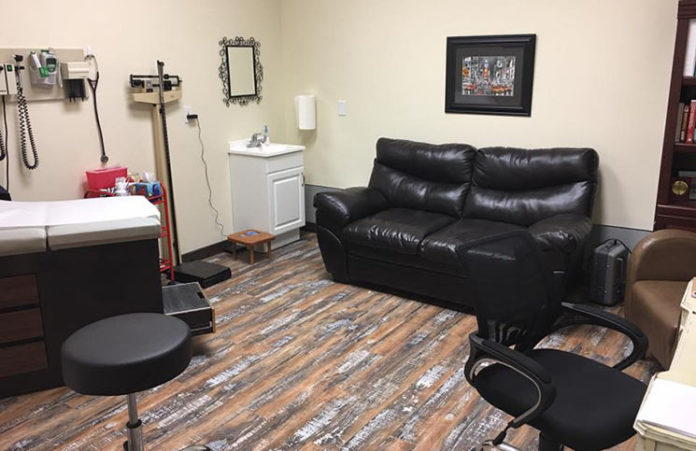
I am a physician. I’m not supposed to know anything about insurance. The great irony is that since I stopped accepting insurance, I have had to learn more about health plans than I could have imagined.
Health care costs are continuing to rise and are becoming unsustainable for some employers, which is a challenge for recruitment and retention. While it is important to control expenses, the bottom-line cost of benefits does not reflect the importance of keeping your employees healthy and happy.
There is a new generation of brokers led by Dave Chase and David Contorno at Health Rosetta, a nonprofit that certifies brokers on their transparency and the extent to which they work in their clients’ interests. Sometimes the best product for the employer is disadvantageous to the broker, in terms of commissions. This is why all the Rosetta-certified brokers are committed to disclosing all compensation and in one case even returning money to their client from an undisclosed commission.
Dave Chase has called “patient engagement” the “super drug” for the next decade. Employers have a role in encouraging their employees’ engagement with health care. Brokers and advisers certified by Health Rosetta use a variety of innovative tools, in combination, to accomplish the counterintuitive goal of reducing costs while increasing satisfaction and improving outcomes.
Here are eight ways for employers to use plan design to engage, help and support their employees when it comes to health.
Direct purchasing: Elective surgeries, procedures and advanced imaging (e.g. MRI, CT, PET) are often billed at inflated prices and reimbursed at contractual rates as a condition for participating in the plan’s network. When billing, clerical and authorization costs disappear, prices come down dramatically. Surgeries are bundled so that surgical, anesthesia and facility fees are handled on a single claim and the price known ahead of time.
Direct Primary Care: The importance of primary care is easy to underestimate. After all, most payers spend less than 5% or 6% on it, even though primary care accounts for more than half the claims. Primary care spending is so low we sometimes wonder if it even makes sense to add the administrative costs of a mechanism like insurance to pay for it.
On the other hand, international comparisons reveal the best functioning health systems spend more than twice as much on primary care and end up saving from less frequent use of downstream care with no loss in health status. That means fewer emergency room and urgent care visits, advanced imaging, specialty consults and procedures. This is a huge benefit for self-insured employers, as long as they are not guided to evaluate the service in dollars per visit. High performance primary care is about reducing cost by increasing access, which is not measured in industry standard visit codes.
Transparent PBMs: A small number of new generation Pharmacy Benefits Managers provide fair pricing and decent savings over older products. Multiple lawsuits are in the news about PBMs fixing generic medication prices with manufacturers.
Specialty drug importation: Not many people are aware that the FDA permits importation of medications for personal use from overseas. One company has developed a process by which they connect the overseas pharmacy and the patient with the employer carrying the cost. They use trusted pharmacies in places like Canada, Europe, Australia and New Zealand and act as the facilitator that allows an individual to order their medications from overseas. Since specialty pharmaceuticals are the most over-priced drugs, the savings can be staggering; like a $90,000 hepatitis medication that can be obtained for under $10,000.
Self-insurance: Most of the products we call health insurance are dissimilar from any other form of insurance in that they take little or no risk. They are transaction processors for self-insured employers, called third-party administrators (TPAs). Nearly half of Americans get their health care paid by their employer via a self-insured plan that uses a TPA middle-man. Less than 15% of Americans are “fully insured” where the health plan faces risk.
Getting your healthcare through Blue Cross has become analogous to getting your groceries through MasterCard. The insurance part of a self-insured health plan is a stop-loss policy the employer buys to protect them in case of catastrophic expenses. New underwriting products have lowered the threshold for self-insurance to five to 10 people. Now, nearly every small business in the country has access to cost savings that result from avoiding full insurance.
No network TPAs: Surprise medical bills from out-of-network providers and the strain of looking for an unknown in-network provider is difficult to navigate. This is a progressive problem because more health plans are using narrower networks. While some policy experts believe narrow networks are the best way to contain costs, others are considering moving in the other direction. They are bringing back the old indemnity plans, paying a percentage of “usual and customary” charges anywhere the employee wants to receive services. No co-pay services are available at direct purchase providers. Large claims are resolved with professional claim negotiators.
Health cost-sharing companies: A number of faith-based companies, specifically exempted from the ACA/Obamacare, were the health-sharing ministries. They originally required a statement of belief and were only available to individual purchasers. They have since proliferated; some no longer require individual faith-statements and others have started working with employer plans. In fact, some Direct Primary Clinics can use their membership management software to allow individuals to purchase a health cost-share membership on a single invoice.
New generation wellness programs: Wellness programs have fluctuated in popularity for many years now. They can change short-term behaviors like taking the stairs and walking more, but the effects tend to dissipate once the rewards and incentives go away. Several studies have shown no ROI, but second-generation wellness relies on personal coaching, not just biometrics. Their effects tap into proven methods of sustained behavior change and promise to significantly improve the health status of your employees.
We run a direct care medical clinic and as such, we do not design healthcare plans. But we have learned enough to direct local employers to advisers who embody the principles of entities like Health Rosetta. We want to help ensure a healthier community with improved quality of life, health expenditures that are focused on high value services and increase the economic competitiveness of Southwest Washington.
Dino William Ramzi, MD, CM, MPH is a physician and thought leader in Clark County. He is founder and president of Delta Direct Care (formerly Patient Direct Care), an employer-facing, community-based direct primary care clinic in Battle Ground, soon to open in Vancouver. He can be reached at dwramzi@gmail.com.


